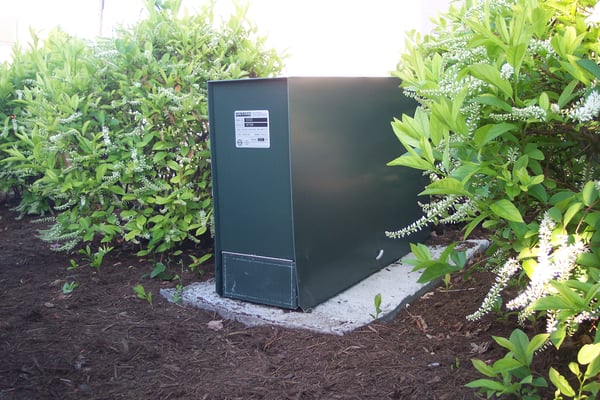 We’re passionate about getting people and local governing bodies on board with thinking outside the vault: keeping backflow preventers and pumps above ground and outdoors in a secured enclosure. It’s the smartest and safest decision you can make both for your property and for protecting the public water supply against contamination.
We’re passionate about getting people and local governing bodies on board with thinking outside the vault: keeping backflow preventers and pumps above ground and outdoors in a secured enclosure. It’s the smartest and safest decision you can make both for your property and for protecting the public water supply against contamination.
While some municipalities and states have enacted regulations and legislation mandating the above ground, outdoor installation of backflows, it remains a fact that two of every three buildings in the US have no backflow prevention. That’s a figure we’re determined to see change, one enclosure at a time.
Let’s take a look at a municipality taking a forward-thinking approach to upholding backflow compliance standards: Fayetteville, North Carolina, home of the Army’s Fort Bragg and a metropolitan area with over a half-million residents as of the 2020 census.
Fayetteville’s Public Works Commission (PWC) explicitly states that their standards are designed to exceed rather than merely meet state and federal requirements, and a look at some of their backflow prevention installation standards for reduced pressure valves certainly hits the right notes:
RPs must be installed in a horizontal position and in a location in which no portion of the RP can become submerged under any circumstances.
RPs must be installed above ground. Backflow preventers installed inside must be a minimum distance of twelve (12) inches above the floor, and no higher than four (4) feet above the floor, with adequate clearance around the backflow preventer for testing and/or repair.
RPs installed outside must be protected from freezing, must be installed a minimum distance of twelve (12) inches above the ground, and no higher than four (4) foot above ground. Landscaping is allowed around the backflow preventer, but must not interfere with the required testing, and/or repair.
In order to prevent obstruction during the testing and/or repair of the assembly, additional piping and/or valves shall not be located within the enclosure.
 And, the point we appreciate the most: An above ground enclosure that covers the backflow preventer is required.
And, the point we appreciate the most: An above ground enclosure that covers the backflow preventer is required.
Fayetteville’s commitment to maintaining a clean water supply is both admirable and comprehensive: the standards they set are detailed but not draconian. There’s simply no good reason not to keep backflow preventers outside and enclosed.
Here’s the heart of the matter, though: Fayetteville enacted these requirements in 2008, well ahead of many cities and government entities in the country. 15 years later, we still see examples of backflow devices and waterworks equipment that don’t approach these standards, which is dangerous for people and property both near and far.
We believe in responsible regulation of waterworks equipment assembly, installation and upkeep, but ultimately, in many parts of the country, the choice is yours. We encourage you to
follow Fayetteville’s example and think outside the vault with an industry-leading Safe-T-Cover aluminum enclosure.
Learn more about our Think Outside the Vault initiative, and contact us to discuss your backflow enclosure needs today.




